Do you want to ride a slow bike fast or a fast bike slow? I hope more of our readers will agree with me—slow bike, please. But we don’t want to go too slow, so give us a little more power than a 250 tiddler for those times when we really need to go somewhere in a hurry. That goes for sportbikes, standards and even cruisers.
New riders—riders so new they’ve never even ridden outside the parking lot where they learned to ride—agree. Engine size isn’t that important to these folks—Kawasaki calls them ‘Intenders’—but they do want enough power to accelerate with authority onto freeways and with traffic, and they want to be able to grow into a bike’s capacity as their skills grow.
What isn’t as important to these Intenders is the figurative and maybe even the literal baggage American-style cruisers come with. According to Kawasaki, what they want is a functional and useable bike that can fit a very broad range of body types and sizes. Kawasaki could pick the engine configuration, and when it comes to delivering horsepower for dollar, it’s hard to beat a midsized parallel Twin—hello Versys/Ninja 650 motor. That compact mill means you could package it into a small, light and narrow chassis—and the Vulcan S took shape. (Read our new-model introduction here.)
The eight-valve, liquid-cooled dohc twin is basically the Versys/650 motor tuned for better midrange and low-end power and response. That means a heavier flywheel, redesigned cylinder head, longer inlet tracts and other tricks. Those tricks reduce top-end horsepower, but add a lot of meat to the part of the powerband where the rider spends the most time. It’s fuel injected with DFI and twin 38mm throttle bodies and the exhaust is an industrial affair, slung under the chassis to avoid burning the rider. Kawasaki’s Croft Long told me that “it’s not the traditional beautiful shape, but our customers want an exhaust that won’t burn them and won’t get in their way.” Get ‘er done!
Continuing the function-first theme is the chassis. It’s reminiscent of the Versys, featuring a lay-down shock with a linkage that offers 3.2 inches of wheel travel. The frame places 62 inches between the two radial tires (a 160 section in the back, and a slightly stylish 120/70-18 in front), a 41mm fork handles suspension up front, and there’s a 3.7-gallon tank. It uses a solo seat (a passenger seat and pegs are available as accessories) and clean, simple styling to finish it off. Gassed up, Kawasaki claims it’s about 3 double cheeseburgers short of 500 pounds.*
Kawasaki wants you to remember just one thing about the Vulcan S Ergo-Fit. That’s the system to pre-fit Vulcan customers to their bikes before they leave the showroom, and about 60 percent of Kawi dealerships have Ergo-Fit displays. The footpeg mounts are adjustable, there are three seats available, and you can select two different handlebars to get you as comfortable as possible with the ergonomics and controls, and the brake and clutch levers are adjustable for reach as well. This is a huge thing for new riders, who value the confidence a good-fitting bike can bring.
Kawasaki chose Santa Barbara to show off the Vulcan’s versatility, and the weather gods gave us a beautiful winter day to ride in. Riding around town, the Vulcan showed off its ease of use—the clutch is light and easy to manage, and the transmission is smooth and precise, although it requires solid movement to shift. I liked the neutral-finder feature, which should sooth new riders by making it simple to pop into neutral—and impossible to click into second at a stop. The wide bars and low center of gravity make the bike very easy to handle around town—I was surprised when I saw the claimed wet weight is barely under 500 pounds—it feels 30 pounds lighter, even when stopped. The motor is smooth and tractable, and the FI worked as close to perfect as it gets—the heavier flywheel probably helps a lot as well.
Out on the road, the Vulcan S really impressed me. One of my favorite classic cruisers is Kawasaki’s Vulcan 500, and the S is a worthy successor. The power isn’t mind blowing, but it’s ample and you can find it in most any gear—even top-gear roll-on passes are a cinch. The counterbalanced motor is much smoother than I remember Vulcan 500 or EX500 mills, and it even makes a cool, racy intake sound you can hear through earplugs. Top speed is probably well over 100 mph—enough power to keep up with traffic? Enough to grow into? Enough to entertain veteran riders? Check, check and check.
The twisty-road experience is also engaging, though it has its limitations. The bike’s light weight, well-chosen spring and damping rates and sporty motor let you really haul ass on a two-lane road, even one with bumpy, winding California coastal pavement. I was surprised how easy and fun it was to ride this bike at an ill-advised pace. I’d almost say it’s not really a cruiser, maybe some kind of standard (substandard? The marketing guys probably wouldn’t want to work with that), but it’s still limited by its category. There just isn’t enough cornering clearance and rear-end travel to really cut loose on the backroads, but maybe that’s a good thing, eh? These Intenders don’t want to go fast, they just want to go fast enough.
The group of riders I was with included some riders with a lot less experience than the typical moto-jocks at these events, and they were taken with the Vulcan S. Sasha Rojas, a member of the East Side Moto Babes, hasn’t ridden anything besides her Ninja 250, and she was very impressed. “I can go over 40 mph in 3rd gear,” she exclaimed, exuberant, “this is amazing!” She also noted riders even shorter than her 5-foot-two-ish would still be able to ride.
It’s a versatile machine (with a Versys engine – ed.) that should appeal to a wide range of body shapes and sizes—Kawasaki claims the Ergo Fit doubles the number of U.S. adults that can fit on the bike—and users can customize it from the Kawasaki parts catalog, adding luggage racks, sissy bars, locking saddlebags and a very stylish windscreen. It may not be the best choice for touring, as the cruiser position caused serious numb bum after a day in the saddle, despite its good foam and supportive shape. Fuel economy—assisted by an “eco” indicator—should be in the low 50s.
I didn’t have a lot of cruisers I’d recommend to a rider like Sasha—more power than a 250 or small Single without the weight of the larger “middleweights.” But the Vulcan S, $6,999 or $7,399 with ABS, really gets the job done. It’s fun, fast, easy to ride and looks the part, though they really could have done a better job with that tank and muffler. But those little nits won’t bother this Vulcan’s target market, who just want a simple bike that will get the job done with a little character and style. This is that bike.
*498.3 pounds for you vegans.
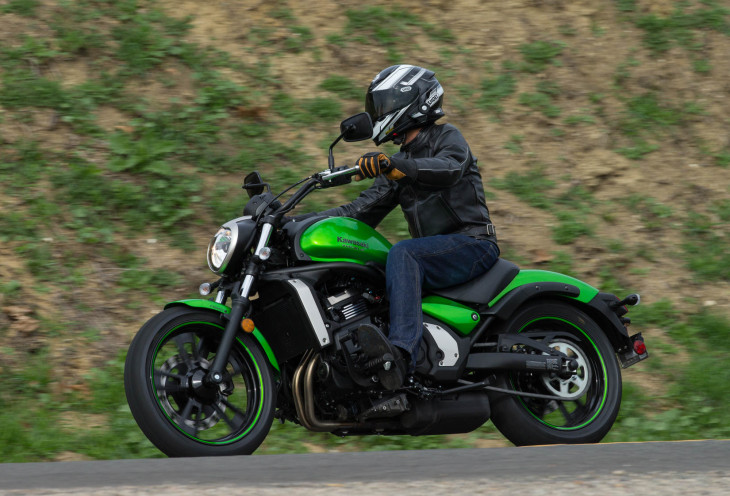
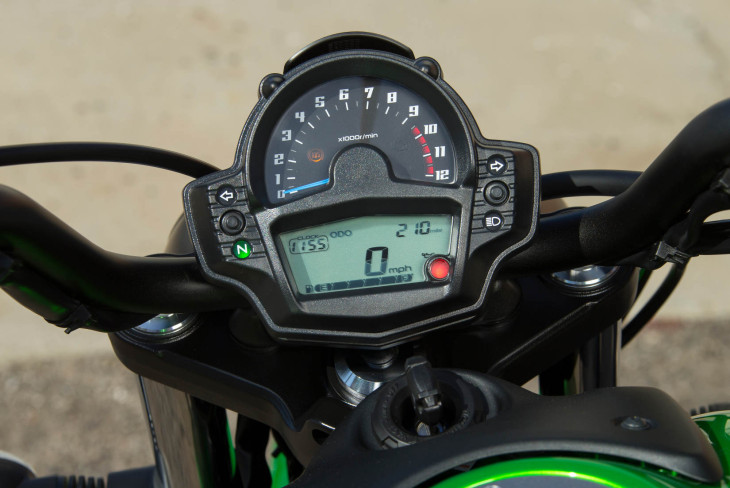
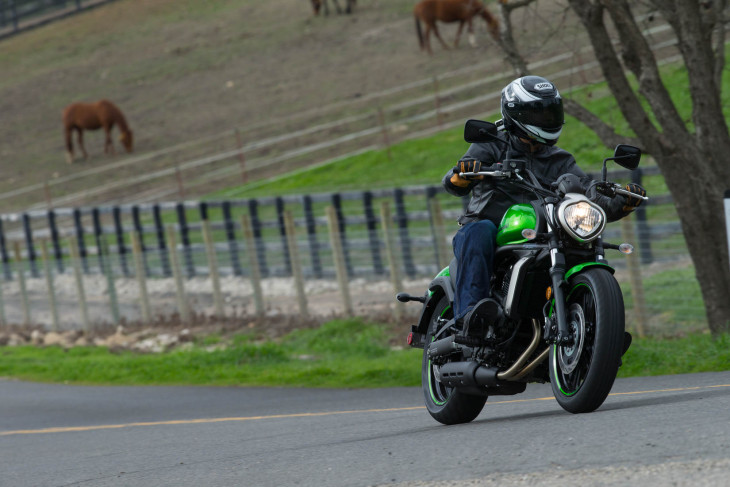
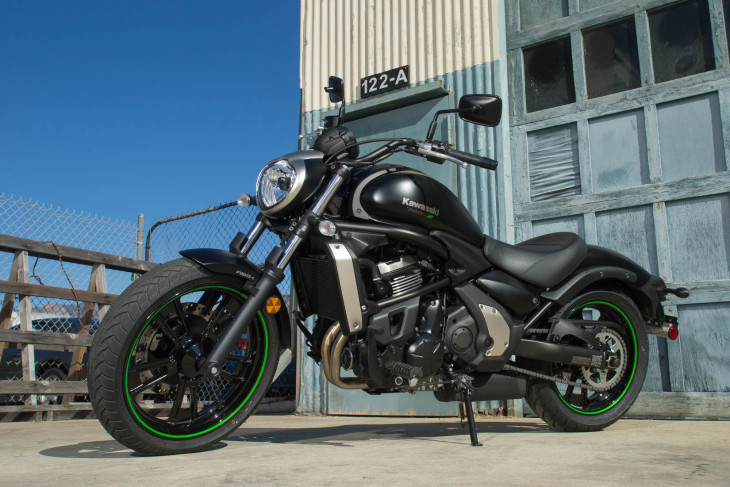
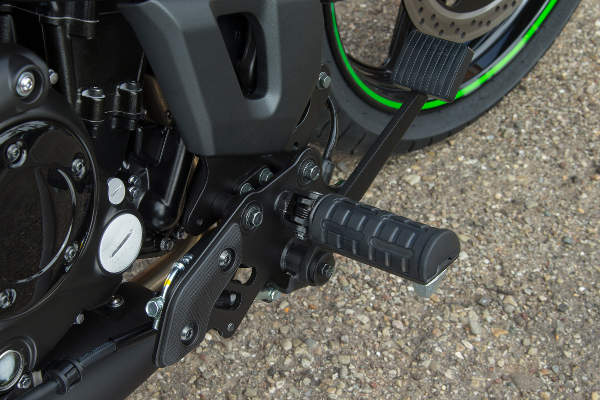
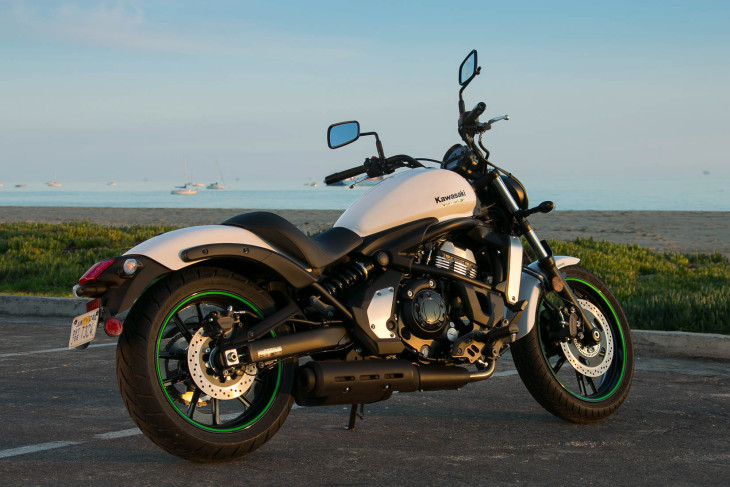
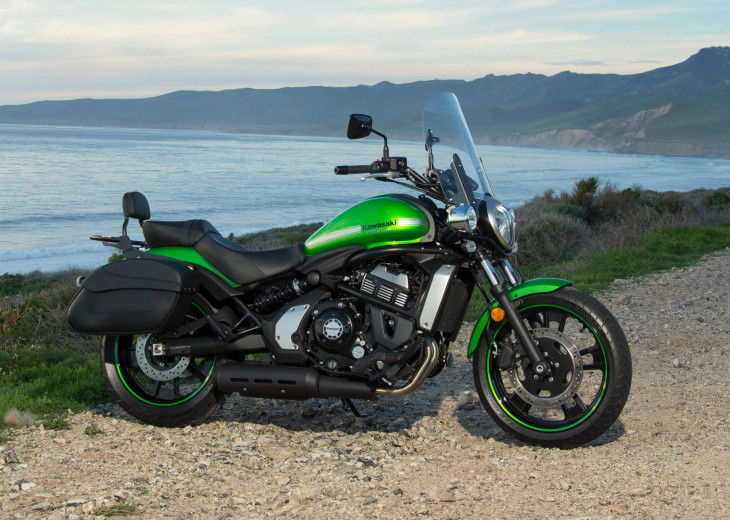

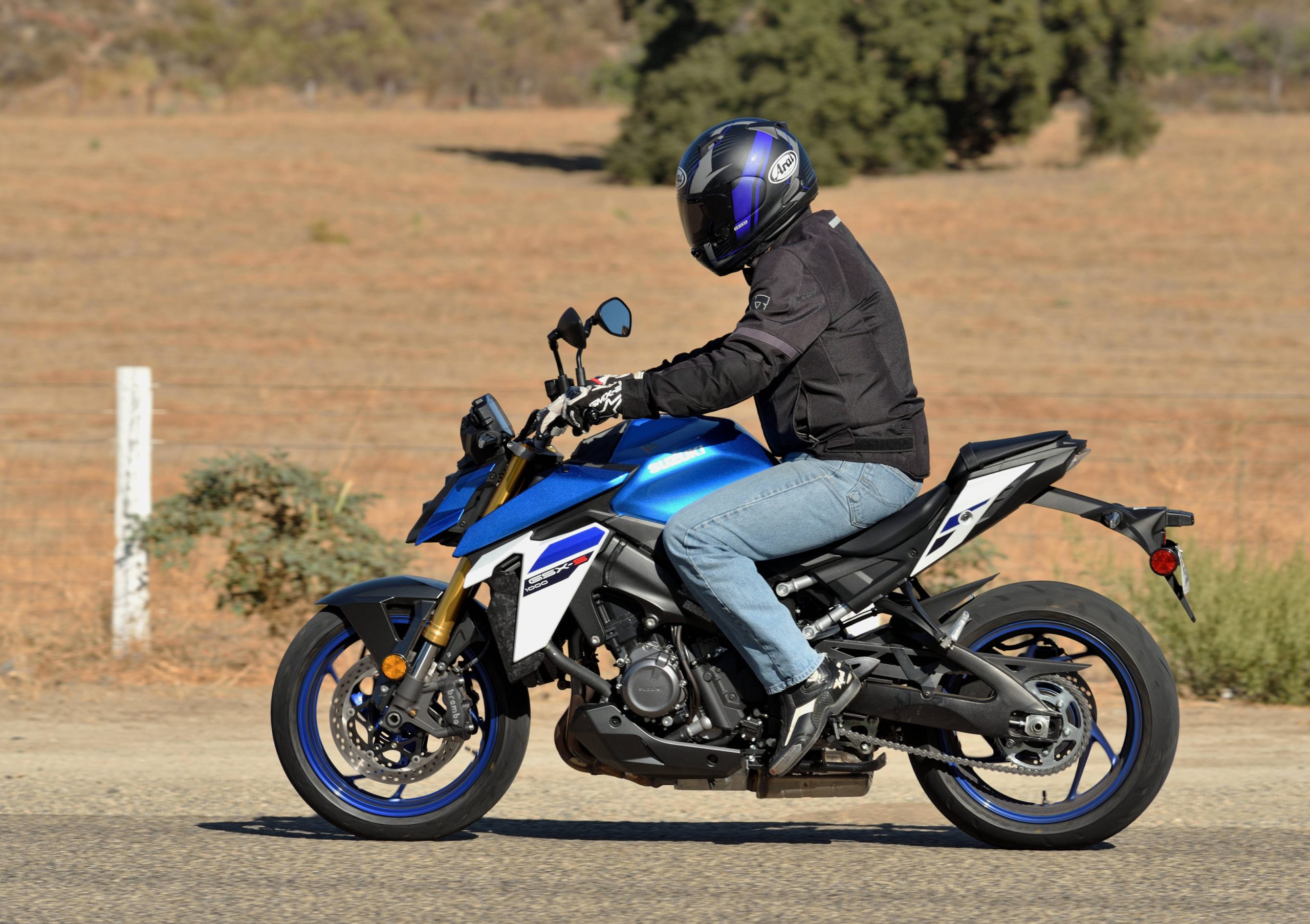
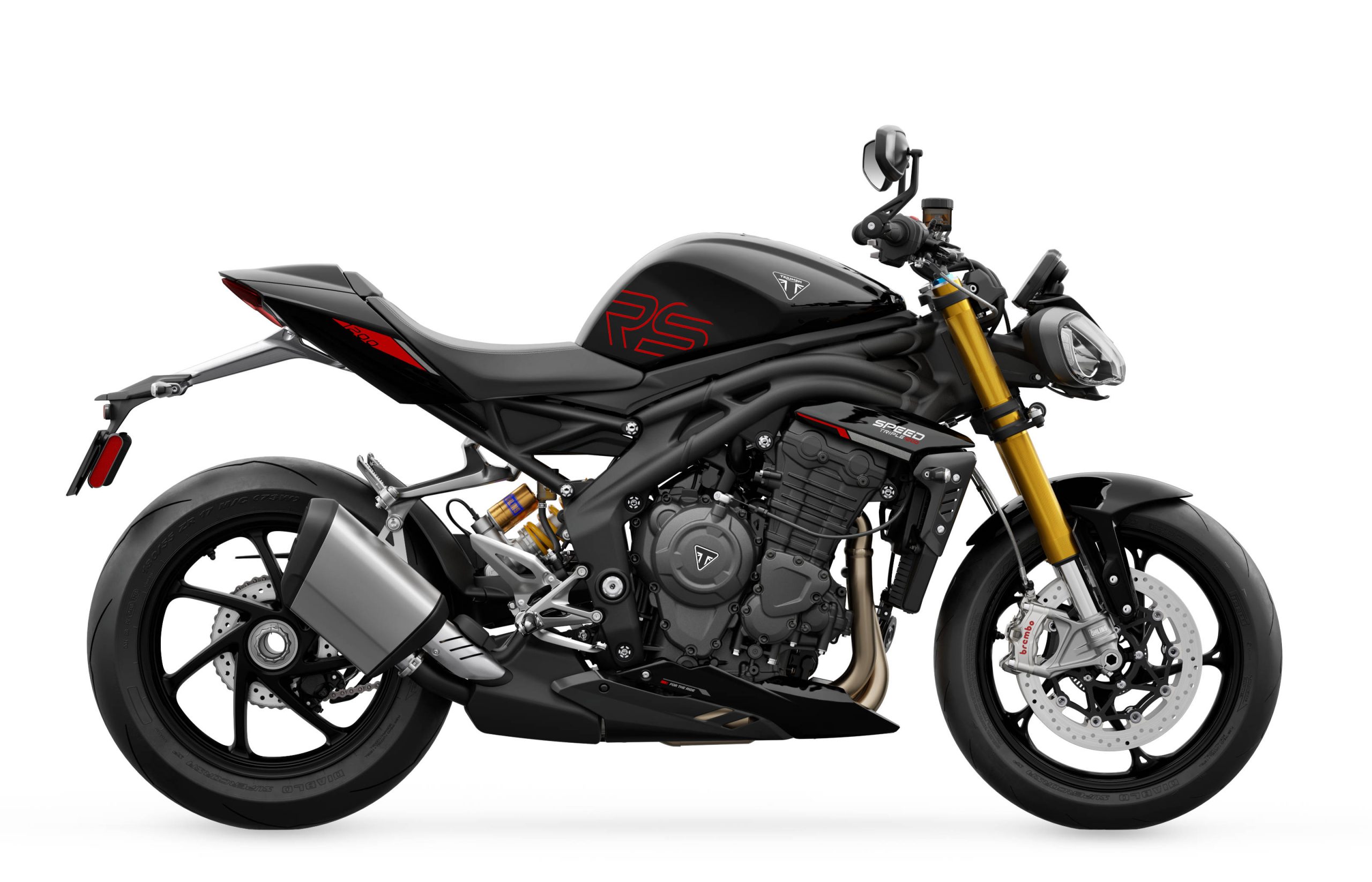
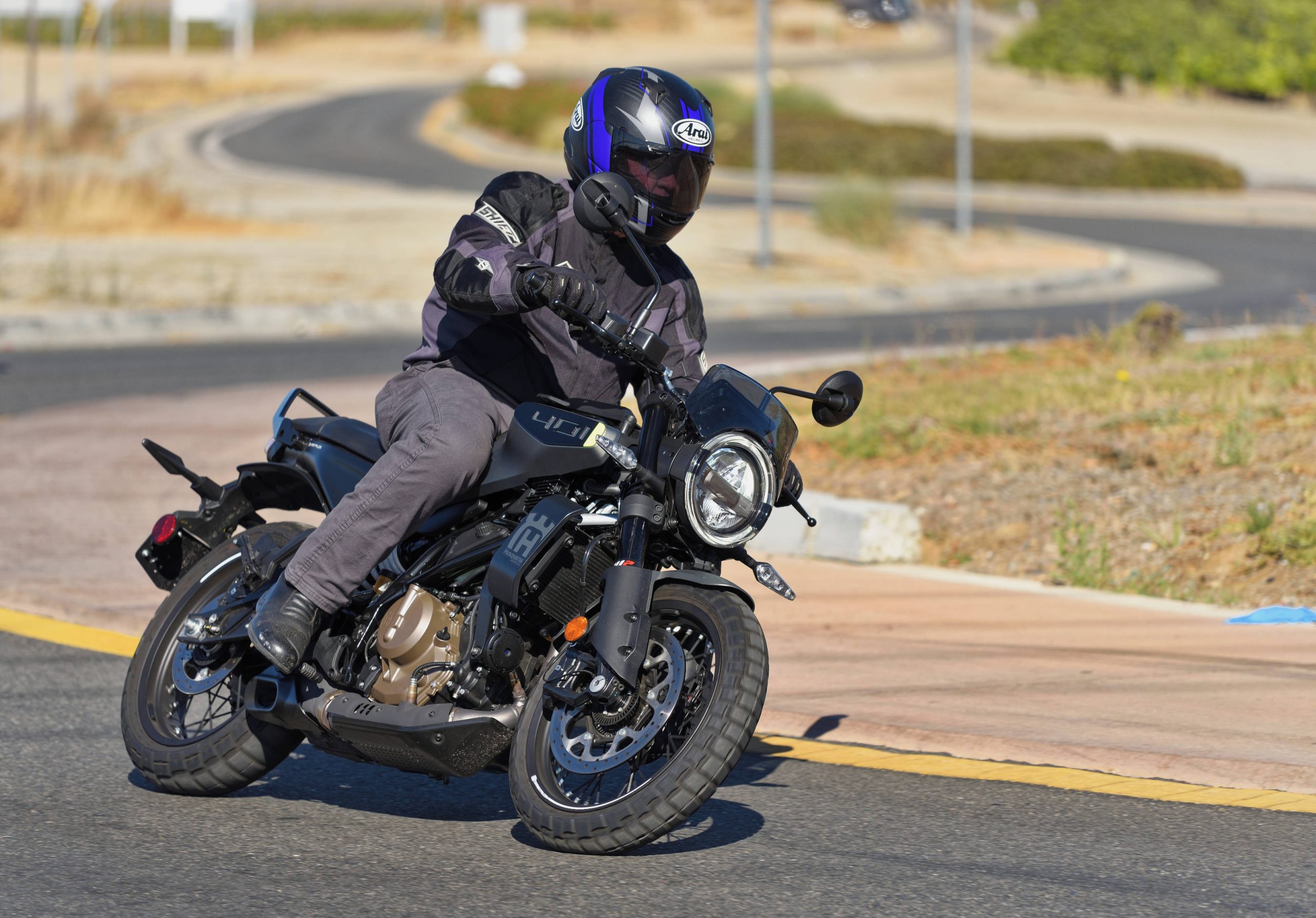
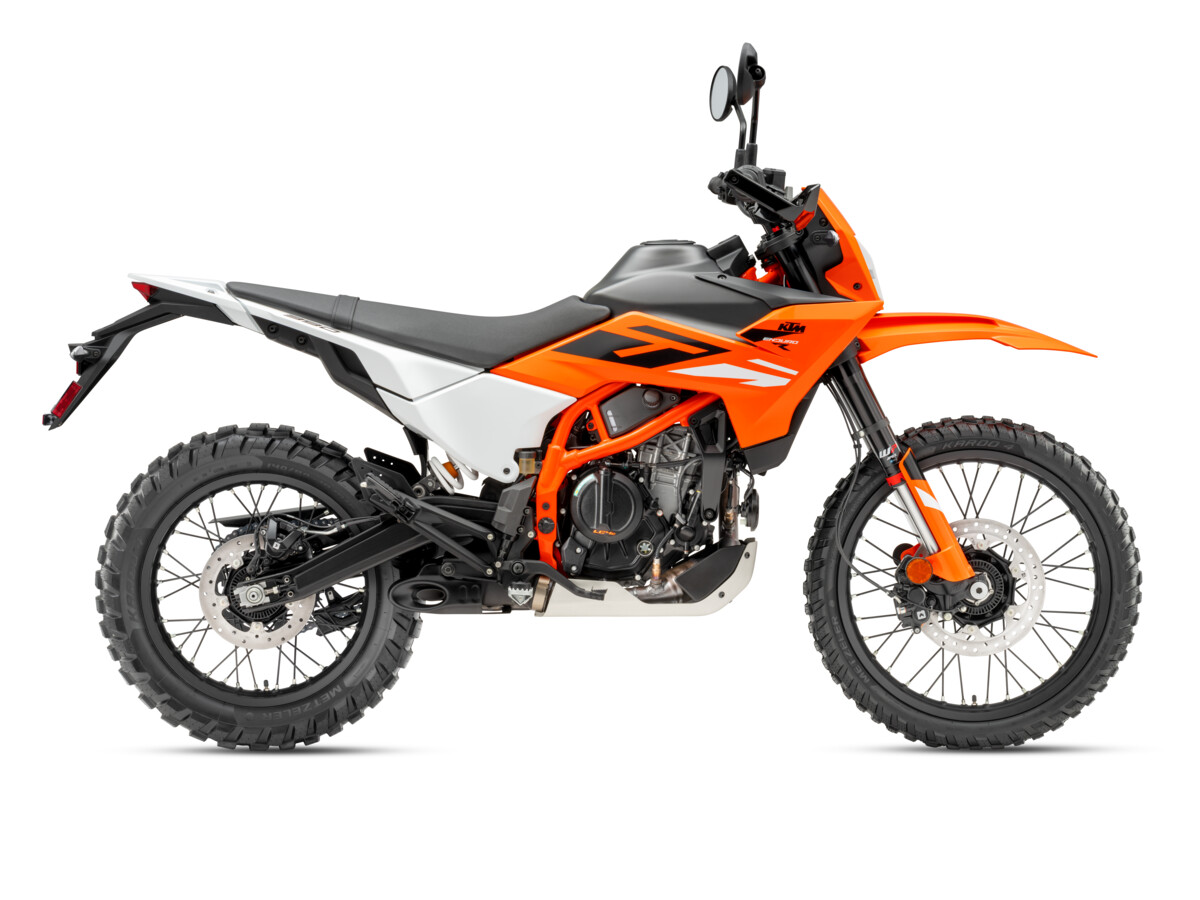
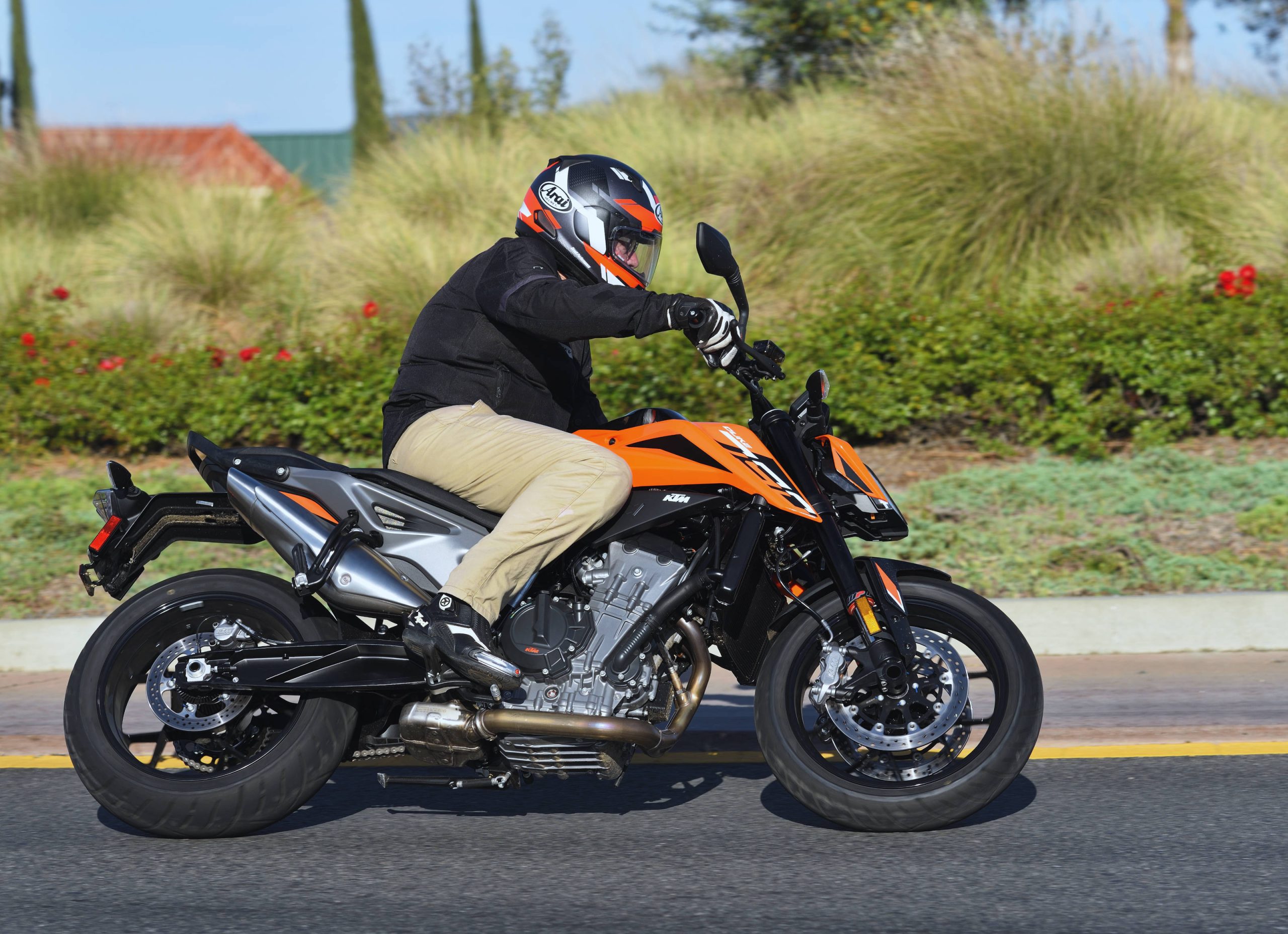
It looks like someone left it under a heat lamp too long and some of the parts melted.
I would like this bike…except I really don’t like it at all.
Ugly. Simply ugly.
It might be just me but I think the windshield on a bike should run parallel with the forks. When they’re not parallel, it makes the front end “disjointed” and not flowing. You guys picking up what I’m laying down?
Sticking a big piece of plexi on the front of a naked bike looks disjointed to me no matter which line it is parallel with.
I love the idea of being able to fit the bike to the rider. As a short guy who tends to like very tall bikes, I am very accustomed to not being able to get more than the ball of one foot down at a stop and don’t normally give it a second thought. That said, I am often surprised how comfortable I feel when I ride a bike that I can actually flat-foot. For someone who has never ridden a motorcycle before, I am sure this can be a big selling point. Tall people really need a custom fit too. Hopefully, this concept will migrate to some other Kawasaki models as well.
Ultimately though, they are trying to sell motorcycles to a generation of consumers that are accustomed to things just working with minimal TLC. I think things like belt / shaft drives and hydraulic tappets are just as important as ergonomics for getting a new generation of riders into the saddle.
re: “I love the idea of being able to fit the bike to the rider.”
then you’ll LOVE the UFit system on Can-Am’s new spyder F3.
the rep at the show said apparently you have to come in for a “fitting” of the handlebars and such before you take delivery. at that point I said “brilliant”, this creates positive experience for the customer and should go someway at re-establishing a bond between them and their local dealer.
http://can-am.brp.com/spyder/spyder-f3-fitment.html
“then you’ll LOVE the UFit system on Can-Am’s new spyder F3.”
Too bad I don’t LOVE the Can-Am Spyder that comes attached to the UFit.
re: “Too bad I don’t LOVE the Can-Am Spyder that comes attached to the UFit.”
no…? fairplay.
I’m sure my love for the new design prolly has something to do with the exposed chassis tubing. like the trellis of the H2, it smacks of Ducati design cues. as a devout Ducatisti, my “religion” obligates me to worship anything with this engineering solution. LOL
LOL. I am not saying it isn’t an impressive or good-looking machine – it is both. It just isn’t anything I would ever care to have.
I think the Ergo Fit system has the potential to be the real game changer here. The reaction from folks who are short of leg when they sit on the short version tells me Kawasaki is that much closer to selling a motorcycle. If the bike doesn’t fit its going to be very hard to stay enthusiastic about riding. Falling over at stops on your shiny new motorcycle is quite discouraging.
Yes that is the most significant element here, and hopefully can spread though the line up and to other manufacturers. Making the as delivered ergonomics adjustable from the dealer is a valuable piece of engineering and a potentially valuable marketing tool for any motorcycle. Other than seat height on a few models currently your on your own.
“I think the Ergo Fit system has the potential to be the real game changer here.”
I agree with that 100%.. built in adjust ability on the seat/pegs/bars front is big news. Hope it catches on.
However the bike itself “sport cruiser” is also pretty cool. Spiritual successor to the old Honda Magna
A lot of complaints about the exhaust. I could live with that, but the frame tube that goes past the cylinders on each side and the pieces of black plastic by the footpegs are a real shame looks wise. Personally I can’t stand forward mounted pegs but I guess with a seat height this low there’s nowhere else to put them. Apparently there’s lot of people that like to ride with all their weight on their butt. Adjustable ergos is a nice idea, but how much does a seat, bars and pegs add to the purchase price?
I can’t believe I’m saying this, but I’d go with the H-D Street 750/500 in this segment. Better looking motor, sound, and overall appearance. Which are the same reasons parallel twins aren’t usually used in cruisers.
Your comments about looks made me think a moment. I’m sure looks are at least a little important to most riders, I mean, after all, bikes tend to be “Dig me!” vehicles. But I would never buy a bike solely on looks alone or what it sounds like. There’s waaaay too much more going on that’s important to me before buying a bike.
After seeing them in person and ready the same impression from some others, the HD Streets don’t seem to have a very high build quality.
The problem is looks and sound are all you can go by when buying a new bike. It’s not like the dealer is anxiously offering test rides. It’s just buy, then decide.
Our local BMW/Duc/Truimph place will let me test ride any bike I want, even when they know I’m not in the immediate market. Contrast that with the Japanese dealers, they don’t do test rides.
Funny the Eurobike guys will let me test $20k+ bikes while I can’t even take a CBR250 our for a spin.
There are several dealers here that let you take the Japanese bikes for test rides. I am sure it is no coincidence that those dealers I know of that do that also have at least one European brand in their lineup and are fairly large.
I have never bought a bike from a dealer that doesn’t offer test rides, and I never will. There are several bikes I’ve wanted but walked away from because I didn’t jive with the bike during the test ride. It sure would have been irritating to shell that much money for something I would want to sell immediately.
re: “Funny the Eurobike guys will let me test $20k+ bikes while I can’t even take a CBR250 our for a spin.”
here’s another moment when one’s motoIQ should kick in prompting them to ask the question…
Q: what’s the margin a Honda dealer sees on a CBR250 versus the margin a BMW dealer sees on a 12GS…?
My local Honda/Yamaha dealer allows test rides.
I tes rode a Suzuki before I bought it, and I would think if you told a dealer you don’t buy, without a test, then start to head out the door to another dealer, they would stop you and find a bike… If you don’t have another dealer nearby, yuo may have a tough time with that.
Even riding a used bike of the same model would be better than sitting on the bike, revving the motor…
Also, some makers (like Triumph) will have testing days, with an entire fleet at the ready. Or try a Cycle Show with Demo rides..
re: “It’s not like the dealer is anxiously offering test rides.”
wait till the day YOU own a franchise (or own ANYTHING) and you’ll be less inclined to offer “free lunch” as well. that being said, my local metric dealer DOES allow test rides, but certain conditions have to be met…
A, they only do it when the OEM sponsors a “demo day” (think Yamaha). B, for those with a demonstrated history of patronage. or C, those whose credit application says they aren’t talking sh#t/kicking tyres and can actually afford to buy something. fairplay.
we’re a decade and half into 21st Century. show me someone who thinks this criteria is “unreasonable”…? and i’ll show you a “bikeworld beggar”.
I’d have to disagree that a test ride is free lunch – it is merely a sample of what is on the menu. It is a way to sell bikes and build relationships with future customers.
Granted, it is a numbers game, and a dealership needs to be able to make a certain margin on their bikes or sell enough of them to offset the cost of providing test rides. But therein lies the conundrum: will you win more customers offering test rides than you would lose if you didn’t offer test rides? 20 years ago, you could get a test ride in a BMW or Harley Davidson dealership readily, but it was fairly rare everywhere else. Now, dealers that do not offer test rides are in the minority. So I have to think most shop owners have determined it is a beneficial – approaching necessary – cost of doing business this day and age.
re: “I’d have to disagree that a test ride is free lunch”
and yet a balance must be struck.
re: “It is a way to sell bikes and build relationships with future customers.”
it is a way to send insurance premiums through the roof. which of course must be fed back into the shop’s labour rate and the need to hold margins (already slim) during the sale of major units. ie. 2 things you’ll find the beggars universally complaining about. see, no “free lunch”.
case in point, I recall an incident back at a local Ducati dealer (a Ducati dealer mind you) when the Streetfighter came out. the unveiling was held on a Thursday evening and then the following day test rides began (I attended both). while out on a test ride with a group of random individuals (of professed but really UNKNOWN riding skills) one guy managed to crash and severely damage a brand new bike with zero miles.
he says a merging car pulled out in from of him and ran him off the road. well yeah, a car merging from riders right (with it’s signal on) came from a KNOWN high-volume off ramp and merged onto our roadway.
but what he did, was fail to realize the speed we were travelling matched that of the merging vehicle and it kept him and his small profile (relative to a car) in the driver’s blindspot for an extended period of time.
so rather than yielding to a car that HE could clearly see (but couldn’t see him) he thought he was big and bad because (riding his first ducati ya know) and thought he could play a game of chicken with a 4-wheeler and win…?
well he LOST, rather than rolling of the throttle he sped up, then panicked realizing he was in over his head, locked up the brakes and went down like a 2-dollar whore (this before the proliferation of ABS by everybody and their nana).
I was riding at the back of this group and saw the whole thing. i’ve ridden past this merge point 100’s of times over the years without ever falling victim.
Q: how has Norm G and his infinite riding skills been able to do that…?
A: Norm G doesn’t have infinite riding skills, that guy made a bad choice.
more specifically, he made a bad choice while in possession of an expensive vehicle he didn’t own, nor could he afford. and that ladies and gentleman is the REALITY of offering test rides to “joe random”.
The other side being a guy walks into a dealership after doing much research and decides on a vehicle he is sure will suit him. He has a pocket full of jingle or the appropriate credit to instantly buy said vehicle, and an MC endorsement on his drivers lic.
Multiple things can happen at this point (1) the dealer says no test rides and the potential buyer walks out (2) customer takes bike for test ride and wads it up (3) customer takes bike for test ride but doesn’t like it (4) customer takes bike for test ride and loves it and comes back and says ” write it up”
Dealer gambles in examples 2, 3 and 4 but absolutely loses in example 1.
That is always a risk, and I am sure any dealerships that offer test rides have had a bike dropped or wadded more than once. Still, I think it is getting to a point where test rides are almost a necessary cost of doing business, particularly in markets encompassing larger cities. Selling enough bikes to keep the doors open is ultimately the only reality that matters. Unless you are a dealership for whom the lion’s share of sales comes from powersports vehicles other than street bikes, I think test rides are part of that reality. Sure, take some precautions as a dealer and have some guidelines for being able to ride, but offer it.
My brother spent the past two years kicking tires and riding several BMWs and Triumphs (at the same dealership), often the same model, pretty regularly. A few months ago, he bought a decked out R1200GS and $3000 in accessories and riding gear from that dealership. Every bike I have purchased was preceded by a test ride as well. Usually multiple test rides for at least a month leading up to the purchase.
The Kia Rio of motorcycles. Hard to believe there is a large enough market for yet another emascualated Harley clone cruiser to even bother certifying it for sale.
Kawasaki really needs to find a color other than electric puke green on which to stake their corporate image. Or perhaps not…
“Hard to believe there is a large enough market for yet another emascualated Harley clone cruiser”
There isn’t anything Harley Davidson-ish about this bike in my opinion. The only similarity is that it is a cruiser.
Oh, I agree. Except, for the target audience, the fact that “the only smilarity is that it is a cruiser” is more than adequate. I don’t think we’re talking about a clientle that makes subtle distinctions. Maybe they will be fooled by the “V” logo name, the likes of which are usually reserved for the “potato, potato” bikes.
Kia sold 40k Rios in 2013 and 36k in 2014. Not really a decrease as many buyers moved to the Sedona. Now do you get it Larry? Those numbers would make Harley drool. Well done Kia….I mean Kawasaki, and I do appreciate the fact you added a second color (second pic from bottom) for those among us who have a problem with the color of my lawn.
Sorry if I offended you as a Kia owner. The analogy was meant to point out that is bike is aimed at motorcycle enthusiasts about as much as the Rio is aimed at automobile enthusiasts. Now do you get it Schmutz? And Kia, er, Kawasaki still hangs its hat on that putrid green, even if they do offer other colors. We’ll see what kind of sales numbers this fine unit generates. But perhaps you’re right, cheap (without other redeeming qualities) sometimes can generate large sales numbers. Look at WalMart. Too bad we won’t be able to come back and revisit this thread in a couple of years. As far as Harley drooling, welll…
Oh I get it, not sure you do. Neither the Kia nor this particular bike are aimed at enthusiasts at all. They are designed and priced to bring new buyers into the fold, a strategy employed by every manufacturer moto or cage. As for corporate colors, who can say what works and what doesn’t? Mean Green has been around for awhile. By the way, never owned a Kia or a Kawi, but might go buy one of each just to check them out. Cheers.
re: “for those among us who have a problem with the color of my lawn.”
mmmmnnnn… sour apple Jolly Rancher… (Homer Simpson drools)
I don’t quite understand the whole “part of the powerband where a rider spends most of his time” thing. Instead, shouldn’t they educate people on riding within the powerband of the engine and not just shift all the way up to top gear by the time you’re across the intersection. If only people would realize their bikes would accelerate harder in the lower gears. It just seams so many people are afraid of RPM. FACt; a bike will be slower if you reduce it’s power.
Torque makes a bike move, horsepower makes a bike move fast. If 80% of the torque is produced at 3500, there is little need to rev beyond that unless you are racing or just want to feel the thrill of rapid acceleration. Maybe passing or merging onto the freeway, but after that the low rpm torque will move you along perfectly adequately.
…but, but not everyone is in a grand hurry while out riding. I’m more than sure most riders are aware of what their bikes can do at max throttle but choose a more relaxed style since it fits the need and circumstances. That’s what’s meant by “where a rider spends most of his time”. Even on my Norge, if I was always running to redline in each gear I’d be either climbing the bumpers of the vehicles ahead of me or lose my license.
I don’t practice short shifting to any extreme but allow my engines to run freely, but not necessarily at full throttle, remaining in an appropriate gear for both responsive power and road speed. That way I have my bike in a responsive mode in case something comes up where I need more when I call down to the engine room.
So on a bike such as the Norge, that means keeping it in a range where it won’t bog if I open the throttles and not unnecessarily spinning it higher than it needs to be. That is my part of the powerband where I spend most of my time, it’s a balance.
Cruiser riders probably tend to ride more sedately than sport bike riders. That’s why you see motors modified for better and broader midrange power in those cases.
You may currently enjoy wringing the neck of what you ride to extract all that is there but I can tell you as most get older that type of riding isn’t what appeals.
Ride safe.
I get that but then why do people concern themselves with how well something accelerates while riding along at a sedate clip? Why would an engine need to be redesigned to make less power? They could have just stuck restrictor plates in the intakes for a lot less cash. Better yet, just lower the gearing. That is the most effective way to get more torque to the rear wheel at any given speed.
Whether a bike makes it’s power at 3500 rpm or 8500, what difference does that make to the rider? I only care how well a bike accelerates, not how low of an RPM I can keep the engine at. There is no extra effort on the rider’s (or the bike’s) part to spin at one RPM vs another.
It’s not that they’re being designed just to cut power. Now keep in mind that a power rating may be at a single spot in the rpm range. It’s a trade-off in engine tuning. If you take an engine and give it authoritative high rpm horsepower you are also moving the torque range up and narrowing the torque band. But, if you take a few of those high end ponies away by any number of means, less aggressive valve timing, smaller carb or TB bore, or less compression, etc. you may broaden the torque band so that the engine is more responsive at lower rpm. There are many variables at play here but hopefully you can see this. Once again, the more highly tuned engine will probably find its way into sport bikes and some naked bikes while the detuned version might be in an on/off road model or a cruiser for example. Ask anyone riding off-road if they’d prefer their power at 8500 or at 3500 and I think you know what would be favored.
Lowering of the overall gearing might be an option with chain drive but even so, it will also have an effect at cruising speed in top gear and may not be wanted.
Likewise, some engine designs employ an under square bore/stroke ratio where the longer stroke is utilized for greater mechanical leverage on the crank which helps torque output at usually lower rpm. An over square design can aid higher engine rpm where intake and exhaust tuning all come together for maximum horsepower output. Different designs for different uses.
This sounds like you’re just repeating the same old misinformation. Allowing an engine to rev higher does not necessarily mean it will have a peaky power band. Giving an engine more revs is actually widening the power band. Among my bikes I have a slow revving pushrods twin and a high revving four. On the twin I have to shift often because it will only run well from 2500 to 4500 or so. My four has a much wider powerband. I can bring it down to 2500 or less smoothly but also have the option of spinning up to ten grand if I want. This means, at any given road speed, if I want to run fast, I can be in a lower gear than the twin and accelerate much harder. Both bikes get around 45mpg.
I also have some dirt bikes and if I want to ride fast, I like the bike that has the higher rev ceiling. Again, being able to use the lower gears allows the bike to pull much harder. On those bikes, it comes down to the high revver also having much more modern suspension which makes the most difference.
Also, the bore/stroke ratio does not affect torque. Sure, a long stroke has a lot of leverage on the crank. But a larger piston has a greater surface area and applies more pressure to the crank. Both designs of equal capacity with have about the same torque. The benefit goes to the short stroke, big piston bike because you can get larger valves in the bore and the shorter stroke allows the crank to survive a wider rev range.
Likewise, lowering compression does not increase torque, it reduces it! High compression makes the engine more efficient. That is the primary reason diesels get higher mpgs and more torque than a similarly sized gas engine – that and the throttle is always wide open, allowing the cylinder pressures to always remain high. Gas engines have to deal with part throttle operation where air flow is inefficient and cylinder filling is incomplete.
I’ll always prefer an engine with more power if I’m interested in greater acceleration. Yes, power is quoted at its peak, so is torque. But a bike with 100hp makes 50hp just as well as a 50hp bike does.
OK Todd, I did repeat myself to reiterate what I wrote. You asked why on earth would anyone want to lower power and I tried to explain some reasons why. The most generalized reason is to broaden the torque range down in the lower and middle rpm ranges. That’s it! Some types of riding and rider preference calls for more in the middle and lower end rev ranges than what they have if that same engine was tuned more for maximum horsepower. That’s it in a nutshell.
re: “I can tell you as most get older that type of riding isn’t what appeals.”
OMG, KILL ME BEFORE IT’S TOO LATE…!!!
You’re safe for now Norm.
Um, come ride my FZ6 sometime. You don’t cruise at 10k where the power is. In fact, right around comfy cruise rpms there’s a lull (emissions/noise, not sure which)(which possibly can be dialed out with PC but reports vary so I haven’t taken the plunge).
This borderlines on trollism, though you seem literate enough to at least read the spec sheet page of motorcycle road tests.
I’ve ridden an FZ6 and consider it ideal. The engine has a very broad power band. You can poke around slowly if you want or spin it up for some brutal acceleration. I have a Monster 900 that has more “torque” than an FZ6, by far, according to the spec sheets. However, the FZ6 easily out accelerates my Monster, it just pulls crazy hard – granted, not as hard as the ZX12R or the Ducati 1198(!!!) I rode. The Monster, by contrast, has a very narrow RPM range; not wanting to go below 3k and not giving much else past 8.
You must be thinking FZ6R because the original FZ6 was truly a gutless thing down low. That and the seat roaster pipes put me off a bike I had hoped to like. I believe this Kawasaki has just been retuned much in the way Yamaha did with the FZ6R in order to make the meaty part of the torque curve more accessible. Less peak power but more in the range where you actually can use it most of the time.
Maybe you’re mistaken. I’ve ridden both (but settled on a K75S). The FZ6 was faster, to me, than the 6R. Since there was so much head room on the FZ6 I was typically in a lower gear at any given speed when I wanted to get on it. The R always expected me to shift up to the next gear, you couldn’t wind it out like you could on the earlier bike. This is a great point; I was able to cruise around at low speeds and low RPM on both bikes where they felt nearly identical. I didn’t see anywhere how reducing the power output on the R made it accelerate better, in fact it was slower!
Funny thing because, I first thought the “R” was an upgraded model from the first FZ6. It absolutely was not. In fact, my old Seca 650 could out run it for sure.
I know what you mean… don’t shift it like a cruiser if it’s not a cruiser, and shift to a lower gear if you need some extra squirt.
Still, a bike with a solid midrange makes for a better everyday ride than a peaky engine. You can maintain a reasonable speed at a lower rpm, suck less fuel, deal with less vibration in most cases, produce less engine noise, and still be able to just twist the wrist if you need to get out of the way in a hurry.
That said, having ridden a Versys, I don’t see why Kawasaki felt that the engine needed further tuning to “improve” the powerband. It already seemed ideal for a bike like this.
Seams like a nice bike (nyuk, nyuk)
I just don’t get the feet forward thing. I rode a Ninja 650 and I really liked the motor. Kawasaki could have done a better job as far as looks go. Bring back the old Eliminators.
Where’s the belt drive?? Huh? And the exhaust designer must have been exhausted when he came up with that ugly lump. A low seat has some benefits, but mostly negatives for taller riders. A sports bike company may need a while before they really know how to make a comfortable seat. Honda seems to have done this with the CXT. It seems the rear suspension is only just OK when it should have been much better – again, a typical Kawasaki failing.
Other than these relatively minor gripes, this is a great concept, and together with a companion 300 model, should expand Kawasaki ownership in America, maybe even world wide. Remember, cruiser types major on pretty features and shiny stuff, so the styling may need to be revised over time.
This is a nice entry level bike and it’s cheap. The motor and drivetrain have a good rep. I however would appreciate a much larger tank like say 5 gallons on this bike. I really like the Factory adjustable ergo’s on this bike too.
Singles, V-twins, parallel twins, Boxer twins, who cares. This won’t be the last bike that the beginner will own but a solid start.
Sam:)
re: “This is a nice entry level bike and it’s cheap”
full stop.
moderator, i ask that you please shut down the forum to any further comments. thank you.
Can’t imagine anyone working up even a modicum of moto-lust for this thing. It manages to take everything that’s wrong with traditional cruisers and everything that’s laughable about Kawasaki’s recent obsession with cartoonish anime, combining the two to create one of the more cynical, goofy/cheap-looking eyesores in recent memory.
Gah.
+1
My take on this bike is: A pretty good job Kawasaki! I like the overall look of the bike, and think the sizing is right. I do have to disagree with the statement that riders don’t care what the exhaust looks like, just don’t want to get burned. Well, the muffler is ugly no matter how you look at it, and I would think there is a better looking exhaust that could be on this bike, and STILL not burn the rider. Otherwise, Kaw is coming out with some great designs.
Is this a new phenomenon riders burning themselves? I’ve had Harleys with upswept fishtails, and scramblers with dual high pipes and every manner of single and dual and triple and four pipe motorcycles except the new stubby under the motor jobbies, and never recall burning myself on a pipe. My wife burned herself once when we were out riding Yamaha AT and LT Enduros in the early 70s and she fell over and the pipe side of the bike landed on her, but that is the only time I can recall.
I had a ’72 RT360 in high school. Burned my knee one day because I was riding in jeans with holes in them
Maybe they’re catering to the flipflop crowd
A parallel twin in a cruiser is not a new idea. Beating a parallel twin powered cruiser with a dozen ugly sticks is.
Ergo fit, what a great idea, wouldn’t it be nice if all manufacturers had an ergo fit for their bikes. I am very aware that at the super premium end of the market BMW has adjustable ergos, but every manufacturer should meet the customer more than 1/4 way.
I appreciate Kawi’s effort to make a newb friendly bike. Any new configuration that gets more people out on two wheels is terrific and 650cc really is a sweet spot for friendly but not dull. But given the “intender” focus, put a gear position indicator for pete’s sake! Given the sophistication of modern engine controls, most if not all of the hardware is probably already in there so it’s hard to see cost as an issue. When I was the newbie, it took a while before I just “knew” which gear I was in by feel as I set up for a turn or a curve. I would have appreciated a GPI back then. More info is good.
The green rimmed wheels look ok on the green bike. Not so much on the white or black.
Will probably make a decent economy cruiser. The motor is a proven item. Can’t think right off hand of much competition for it.
Harley Street 750 comes to mind but I think this is the better bike and should do well in the marketplace.
I like this, reminds me of the Eliminator, a cruiser with a Ninja motor.How bout a really fast version for big boys with a ZX 1000 or 1400 even.
Putting a detuned street/sports bike parallel twin into a cruiser frame is nothing new. I like the idea, you get a proven engine that goes and makes the bike cheaper to produce than a V-twin.
But this “ergo-thing” is new and it’s quite smart. Why let the aftermarket make the money? Sell OEM parts yourself, right on the showroom floor! If you chose a low bar, a high seat and rearward pegs you may be able to avoid the above mentioned “numb bum”.
The typical cruiser seating position is what turns me off, arms/legs forward leave your spine to absorb the bumps and the bike is difficult to control.
Talking about new riders and riding small bikes fast I can’t help thinking: Why didn’t Kawasaki take the 300cc engine to make a lighter, cheaper and lower cruiser? A real beginner’s cruiser? 400 lbs, 30 hp with lots of usable torque, for $5,000?
I’m sure it would sell well in Europe, Asia and Australia but it would probably not be enough for power-hungry ‘mericans.
“*498.3 pounds for you vegans”
HAHAHA!
Looks like a great bike. Still don’t know how 500 pounds is “light” But that is how cruisers role I guess. Been saying the Ninja 650 motor would make an awesome cruiser motor ever since 2006 when I bought the first generation and I was right. Now, I wish Kawasaki would make a 300 version for my 5 foot half inch wife. That would truly be an awesome beginner bike for first timers that they could grow in to.
But that is how cruisers role I guess. Been saying the Ninja 650 motor would make an awesome cruiser motor ever since 2006 when I bought the first generation and I was right. Now, I wish Kawasaki would make a 300 version for my 5 foot half inch wife. That would truly be an awesome beginner bike for first timers that they could grow in to.
I read your post after I posted mine! Seems we had the same idea, a 300 version would make sense. Cruisers aren’t about top speed, anyways.
Who knows, maybe it’s in the making?
re: “Kawasaki calls them ‘Intenders’”
saw them at Wembley in ’82.
Above 1000cc I call them ‘Pretenders’.
Saw them at Harrisburg Forum also around ’82
This bike of reminds me of the 80’s metric cruisers. Unique style due to grafting the traditional cruiser rider triangle to what was the UJM. Not trying at all to look like a Harley. Rather they put buckhorn bars and step seats on just about anything and gave it an L designation after its CC number.
The num bum is a dreaded thing. I would not go near this because of that alone. They do all the fitting to rider but still numb bum!! Moto Guzzi California is the only cruiser with class! Numb bum really ought to be sorted by now! I remember riding honda 900’s and suffering like a bitch after half an hour in the saddle. Never again!
The funny thing is with the power of the Versis/Ninja motoe and a sub 500 lb wet weight this will be one of the fastest cruisers on the road.
Didn’t you read? Kawasaki took all the power out of it to satisfy cruiser people.
No, they made the engine more efficient in the rev range where people actually ride. Be honest with yourself, who cruises around at 8k/rpm +?
Q: “Be honest with yourself, who cruises around at 8k/rpm +?”
wait for it…
wait for it…
A: Bay Area stunters.
https://www.youtube.com/watch?v=uKmS7uwiwwg
It’s not the worst looking motorcycle I’ve ever seen.
You’re right, HONDA has at least 3 models that make this bike look like a beauty queen.
Yep, coupla Suzukis in the mix…this isn’t exactly Bath Salts level
I hate cruisers. They’re usually heavy, uncomfortable at highway speeds and not very nimble. I’m definitely not the target buyer. But, some managed to impress me. The Yamaha MT-01 is one of them. Even if it’s not what we call a classic cruiser. I really like the look of this Vulcan S. Maybe because it takes some cues from a standard bike. This Vulcan S is a worthy successor of the Vulcan 500? Not difficult to be better than the boring and porky 500. It’s the first time that i read that someone think of the Vulcan 500 as a favorite classic cruiser. Beside driving school, who bought the 500?
Is Kawasaki targeting the Yamaha (Star) Bolt with this one?
Q: “Is Kawasaki targeting the Yamaha (Star) Bolt with this one?”
A: Honda’s CTX700.
the Yama-Bolt targets HD’s Sportster since both are genuine V-twins and this is a P-twin.
WEll, the sales of this bike should once and for all answer the question if focus group designed bikes are a good idea.
Is there something wrong with focus groups, or using them to design a product?
I venture to guess that it would indeed contain some current and prospective motorcyclists.
Q: “Is there something wrong with focus groups, or using them to design a product?”
A: depends.
Q: depends on what Norm G…?
A: is this focus group composed of normal/everyday people…? or is it the FOCUS GROUP FROM HELL…?
“It’s really hard to design products by focus groups. A lot of times, people don’t know what they want until you show it to them”.
—Steve Jobs
What a great observation
How did you gather that intent in my comment? I’m just pointing out that based on the article Kawasaki designed a bike almost exclusively through research and customer suggestions not to fit homologation rules for example. Therefore the sales figures of this bike should give us a clue if design by committee will sell in the bike world. I couldn’t be more dispassionate about the topic, just stating the obvious if simplified conclusion.